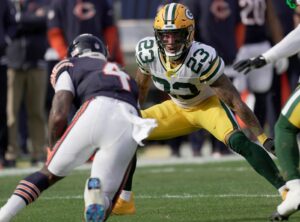Progressing through the other half of the AFC North in Last Word on Pro Football’s newest series, we take a look at the Cleveland Browns schematic philosophy.
The Breakdown: A Look at the Cleveland Browns Schematic Philosophy
A Litany of Formations
For as much flack as the Browns catch, head coach Hue Jackson is an innovative offensive mind who manufactures opportunities for his quarterbacks to be effective. It remains to be seen who amongst the trio of Cody Kessler, Brock Osweiler and rookie DeShone Kizer will be the week one starter, but Kizer is easily the most talented of the bunch.
It’s certainly no secret that Jackson incorporates a heavy dosage of pre-snap shifts and movements from an equal variety of formations, coupled with numerous personnel packages. Those shifts and movements are effective in both creating clearly-defined reads against specific coverages and creating desirable matchups that puts his skill players in advantageous spots.
Referring back to their lack of talent at quarterback, Jackson’s unique play designs are adept at essentially telling the quarterback where he needs to go with the ball. He’s not adverse to relying on tactics such as his “chaos” formations much like he did in Cincinnati. In those formations, offensive linemen split out to wide receiver spots in order to set up screens and quick-hitters along the perimeter. These moves are especially stressful on the defense when they’re out-leveraged before the snap and are then tasked with working through these designs to shut-down athletes like Corey Coleman.
Jackson has also begun to implement more run-pass options (RPOs), and having a smart quarterback with plus running ability and the build to withstand contact in Kizer means Jackson can continue to find optimal situations where these options are most effective. What’s more, Kizer has experience with such RPOs and has a quality one-two punch in running backs Isaiah Crowell and Duke Johnson to get creative. Jackson’s use of spacing and formations will also find ways to lighten boxes for these talented runners.
Cleveland lost Terrelle Pryor and Josh Gordon was denied reinstatement, but the additions of Kenny Britt and David Njoku will find a way to add diversity to the passing game. Jackson’s creativity and use of formations carries over to that element of the offense where receivers will often find themselves in reduced splits. This puts cornerbacks in a two-way bind. When in a reduced split, these corners have to maintain outside leverage or they provide the opposition with a simple release and route landmark victory. However, maintaining that outside leverage allows for that aforementioned victory when working inside.
This is the brilliance of Jackson and further highlights his use of positioning and formations to influence defenses. Because of this, look for Njoku to become an immediate contributor in a system that will feature him in the screen game, as a flexible target in the passing game and a potential big-play threat in those pesky RPOs.
A Bag of Tricks
New defensive coordinator Gregg Williams‘ fiery personality matches that of his defense, deploying numerous fronts, particularity odd fronts, to generate pass rush from multiple players. Behind these fronts, Williams subscribes to the idea that rotating coverages and bringing disguised blitzers from deeper levels is the most efficient way to generate pressure on the quarterback. This is especially true if your down guys are unreliable despite the fact that you stress a high level of football intelligence upon your defensive personnel when your ideas are this layered.
There’s no shortage of rolled coverage in Williams’ arsenal. From invert to trap coverage, players are seemingly always on the move after the snap and working to deliberate positions. This combination of movement, pressure and disguise is incredibly mentally-taxing on offenses where both the quarterback and offensive line have to be alert of where the pressure is coming from through the entirety of the down. In the quarterback’s case, he’s responsible for recognizing the second and third-level movements and where his reads ultimately are amongst the chaos. And that chaos is what leads to a number of free shots on the quarterback.
The addition of defensive end Myles Garrett is critical to the Browns pass-rushing success as current ends Emmanuel Ogbah and Carl Nassib are stiff edge setters who are better suited to defend the run and kick down on passing downs. If you haven’t noticed already, Williams’ fiery movement can’t achieve its optimal level of success without effective pressure at all levels. The Browns are banking on Garrett and Jamie Collins-and potentially interior defenders Caleb Brantley and Larry Ogunjobi-to be key contributors along the line.
Jabrill Peppers is kind of the wild card of this group due to his true, positional nature. I believed a team would maximize their return on investment by putting the ball in his hands. Nevertheless, he appears to be a great fit for what Williams prefers to do. His pressure and disguise-based system works best when he has a rangy centerfielder that can come charging in from from the deeper levels of the field and hustle from the hashes to the deep sidelines. Peppers’ experience as a linebacker and safety will only help Williams become more creative in the long run.






